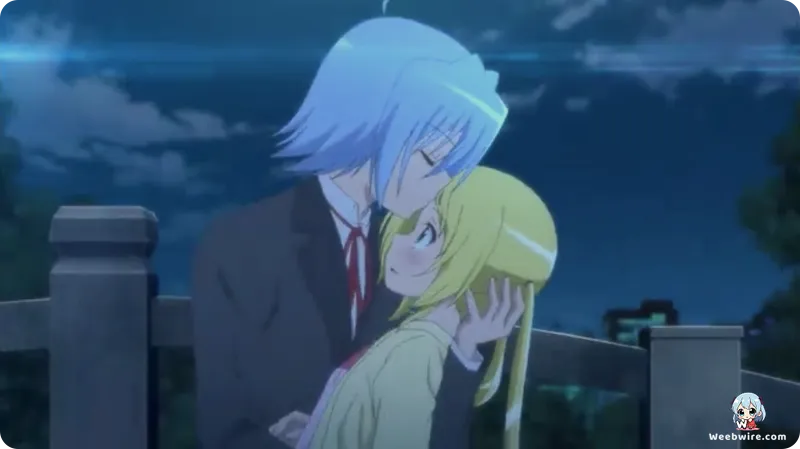Hayate the Combat Butler: Unpacking the Meta-Comedy, Production Secrets, and Why This Shonen Classic Remains a Trivia Goldmine

Since its introduction in 2004, Kenjiro Hata’s manga sensation, Hayate the Combat Butler, alongside its subsequent 2007 anime debut, redefined the boundaries of shonen meta-comedy. This high-octane series follows the perpetually debt-ridden high schooler Hayate Ayasaki, who is thrust into the role of butler for the outrageously affluent Nagi Sanzen'in. Far from a conventional romantic comedy, the title operates as a cultural kaleidoscope, delivering an unrelenting barrage of pop culture references, self-aware commentary, and meticulously layered humor that consistently shatters the fourth wall. The deep production history and the creator’s specific comedic intent are crucial to understanding why this title remains a cherished, if frequently complex, pillar of early 21st-century animation.
The Ironic Strength of Hayate Ayasaki
Hayate’s existence is defined by a relentless wave of catastrophic financial misfortune. An intriguing piece of trivia centers on his name: ‘Hayate’ (疾風) translates to ‘gale’ or ‘swift wind,’ a title that stands in stark, ironic contrast to his grounded, debt-fueled reality. Yet, this name also foreshadows his hidden, nearly superhuman physical prowess. Years spent toiling through multiple grueling, high-demand jobs, ranging from paper routes to assistant debt collection, have endowed him with unbelievable speed, stamina, and resilience. Fans frequently note that the series often masquerades as a ‘supernatural action’ title, given Hayate’s ability to casually survive massive explosions, death-defying falls, and even deflect incoming bullets, all while maintaining his impeccable servant uniform. This extreme physical absurdity is not merely a sight gag; it provides the essential backbone for the series’ frequent, elaborate action sequences and parodies of traditional shonen battle tropes.
Localization Challenges and Meta-Humor Density
One of the series' most distinctive yet challenging elements is the sheer density of its internal and external references. Creator Kenjiro Hata, a noted devotee of classic anime, video games, and deep Japanese pop culture, utilized the manga as a literal repository for these homages. This high frequency of 'gags per minute' presented enormous localization hurdles for international teams. Many jokes rely on hyper-specific knowledge, such as obscure 1980s and 1990s Japanese gaming history, subtle magical girl transformation sequence allusions, or untranslatable linguistic puns. Consequently, the anime adaptation, particularly the initial 52-episode run by SynergySP, adopted a breakneck pace, relying heavily on visual cues and on-screen text to convey the constant stream of humor, rewarding viewers with cultural fluency and encouraging repeat viewings.
Studio Transitions and Original Storylines
The anime’s production trajectory is equally fascinating, marked by significant creative shifts. While the 2007 SynergySP season generally followed the source material, subsequent seasons saw major studio transitions. The second season, Hayate the Combat Butler!!, moved production to J.C.Staff, bringing noticeable animation quality improvements. However, the most debated shifts arrived with the 2012 series, Can't Take My Eyes Off You, and the 2013 series, Hayate the Combat Butler: Cuties. These later adaptations controversially opted for largely original, anime-exclusive storylines, dramatically bypassing key developments in the concurrent manga.

Can't Take My Eyes Off You, notably, introduced new characters and narratives reportedly co-developed with Hata, creating an unusual parallel universe structure within the franchise. This highlights a critical industry observation from that era: the demands of seasonal broadcasting sometimes necessitated original content over strict source fidelity, even for highly successful titles.
Nagi Sanzen'in and the Otaku Archetype
Finally, the character of Nagi Sanzen'in provides crucial narrative depth. Though her wealth is often exaggerated for comedy (e.g., owning half of Tokyo), her persona is deeply rooted in self-aware otaku culture. Nagi is a fervent recluse, obsessed with manga, anime, and retro gaming, a direct reflection of Hata’s own passions. Her struggles with social interaction and deep reliance on fantasy media offer a surprising anchor to the series' comedic chaos, establishing her as an early, high-profile example of a leading character embodying the self-aware otaku stereotype. Her visual gags involving gaming setups or sprawling manga piles are not just humorous; they are subtle, knowing nods to the audience who shares those very interests. The enduring success of Hayate the Combat Butler stems from this potent mix of high-stakes action, chaotic comedy, and its unparalleled commitment to obscure, trivia-rich meta-humor.
Credits
Hayate the Combat Butler
Author
Kenjiro Hata
Cover Art
Kenjiro Hata
Studio
SynergySP
Publisher
Shogakukan
Producers





